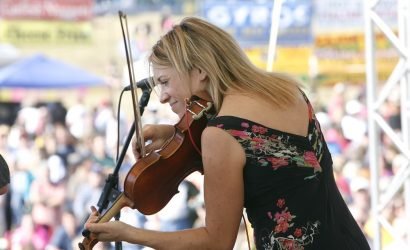The Edward H. Nabb Research Center for Delmarva History and Culture, located at Salisbury University, is a research laboratory for university students and history enthusiasts alike. What began in 1982 as an idea by several history professors, the Edward H. Nabb Center was known as the Center for Delmarva History. Much like today, the primary historical focus for this center was local colonial history and records. Up until 2016, the center was located in a building near the football stadium that was previously used as a doctor’s office. As the center began collecting donated items from local families and groups, they began to outgrow their space.
In 1998, Mr. Edward H. Nabb, an attorney from Cambridge, MD, contacted Salisbury University informing them that he wished to make a monetary gift to benefit local historical research. From there, the construction team began making their plans for a sophisticated and scholarly building where students and guests could have access to books, archives, artifacts, and more. The construction of the Guerrieri Academic Commons, which houses the Edward H. Nabb Research Center, began and the official move into the new building was completed in July 2016.
We took our official tour of the center with Director, Creston S. Long, Ph.D., who began his career with Salisbury University in 2001 as part of a grant project. In 2002, Dr. Long officially joined the staff at SU teaching in the history department. Today, Dr. Long still teaches one history class while his primary focus is the work that is being done in the center.
We asked Dr. Long where most of the archives and artifacts are found on the Shore. He responded that these donated materials come from so many different sources. They hear from families who may be cleaning out the family attic and stumble upon boxes of old newspapers, books, records, and more. Another phone call he received was from a local organization that was in the process of moving into a new building. During the cleaning process, they found hand-written records of packages that were shipped overseas to soldiers who were serving during the 1920’s. Hand-written records, which are absolutely priceless, can successfully be stored in the temperature controlled archives room. This room, which measures out to 8,000 linear feet of storage space is constantly monitored by the research team and kept at a cool 62 degrees. Movable shelves help to maximize the space and with today’s technology are incredibly easy to navigate and move.
For those who think they have found a valuable treasure in their possession, the first step is to contact the Edward H. Nabb Research Center. From there, they will provide you with instructions on how to preserve your items. There are harmful factors to consider when storing valuable items like mold, silverfish, acid in cardboard boxes and more. The Archivists are ready to help you evaluate your belongings and on the rare occasion, will visit your location to view and evaluate the items that you have.
When moving the research center to the new building on campus, Dr. Long and his team had two questions in mind:
- How can we accommodate our students?
- How can we promote and publicize this center to professors and scholars who are studying the region?
Once an item is archived, it is then documented in the Salisbury University database, which everyone has access to. Another benefit to the center is that they now have separate private rooms that will accommodate up to 40 people where open discussions can be had while researchers are working in the quiet space of the center. The center also hires student assistants to train in archival work each semester.
While visiting the center, be sure to stop by the additional space that celebrates the Salisbury University Theater Department circa 1970’s. Complete with original scripts that include hand-written edits and playbills for each show. Photos for each performance are on display in addition to photos of those who paved the way for the SU Theater Department that we know and love today.
In addition, take note of the rotating display located on the 1st floor of the Guerrieri Academic Commons. Currently on display, the Edward H. Nabb Research Center has constructed a display to celebrate African American education from the early 20th century. A notable portion of this exhibit is dedicated to Mr. Julius Rosenwald, an American businessman who donated millions of dollars to build the “Rosenwald Schools,” one of which is still open for touring in Worcester County.
Want to learn more? Visit the research center today! To view the operation hours for the center, please click here. To view items stored in the Archives, please make an appointment with the center so that items can be prepared for your visit.








